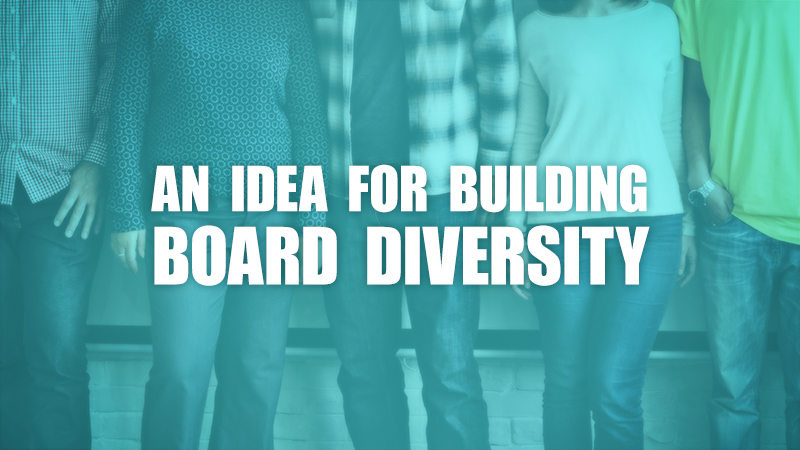An IDEA for Building Board Diversity

For today’s libraries, addressing diversity and inclusion is more important than ever. Representation of the cross-section of our communities is important throughout our organizations, including our library, foundation, and Friends boards. An I.D.E.A. process to build board diversity includes Identifying/Informing, Developing, Energize/Empowering, and Activating steps.
Step 1 – Identify diversity and inform your board and community:
- Regularly track diversity in the community and the Library, both through statistics and qualitative connections with varied constituents
- Include diversity measures in all evaluations
- Structure on-going reports to the board and the community
- Include diversity in all planning processes and outcomes
Step 2 – Include professional development focused on diversity for your board:
- Require professional development of your board members with at least one session annually on community or inclusion issues
- Annually evaluate your board, and have diversity as one measure
- Include community engagement in board development and strategic planning processes
Step 3 – Engage inclusion, and empower diverse groups in the community:
- Conduct Board outreach: have board members meet with community partners, hold board meetings off-site, invite community speakers to present at board meetings
- Ask board members to introduce and engage multi-cultural programs
- Create a board task force on diversity, or any other topic, with community representatives or leaders heading the effort
- Commit budget and goal-setting related to diversity efforts
- Provide resources to diverse community organizations, for instance: for cultural program development, build your diversity assets and connections with community leaders
Step 4 – Activate inclusion in your board recruitment:
- Have a year-round nominating/leadership committee with a charge on diversity
- Actively promote your board leadership opportunities (library, Friends, foundation) to varied community groups
- Meet with leaders of community partners and ask them to join a committee, task force, or one of your boards
Remember that boards are organic, fluid entities that take time to build. Set long-term goals for organizational and board diversity and work the IDEA steps to achieve your inclusion and representation objectives.

